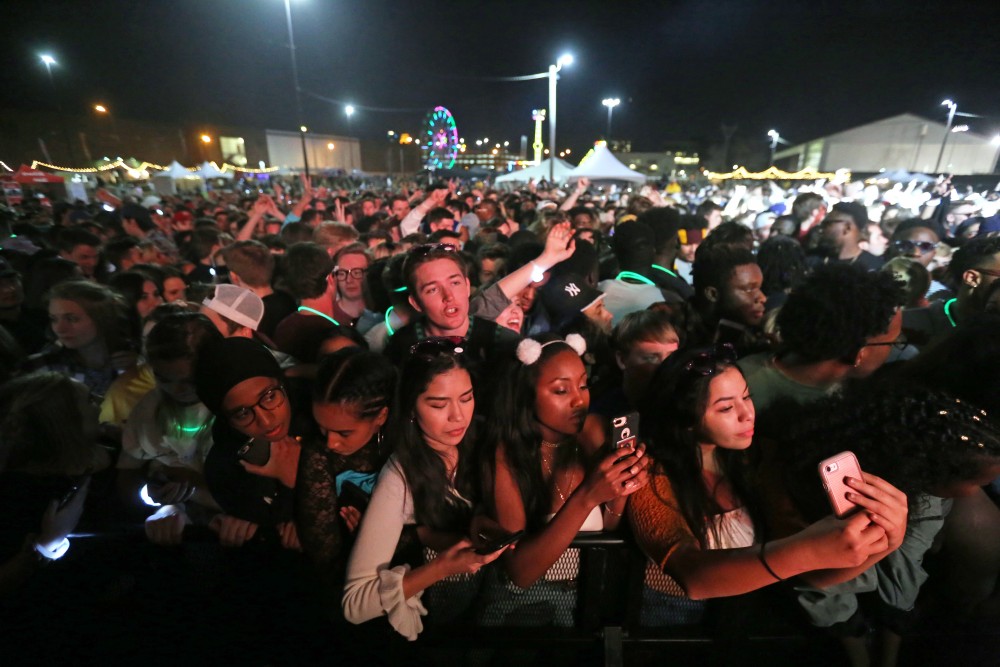After months of planning, the Minnesota Student Association and several groups on campus are collaborating to make Spring Jam 2019 a zero-waste event after falling short last year.
MSA has been working with University of Minnesota’s Student Unions and Activities and University Recycling staff to get the event closer to “zero-waste.” Their work has involved communicating with Spring Jam vendors and preparing student volunteers to instruct attendees on how to dispose of their waste at the event.
“Zero-waste” means 90 percent of all waste generated at the event was diverted from being placed in a landfill, according to University Reuse Program Coordinator Todd Tanner. The total rate of waste diverted from landfills was 74 percent last year, meaning that Spring Jam 2018 failed the zero-waste criteria.
SUA and University Recycling signed an agreement with Spring Jam vendors such as El Burrito Mercado, Cookie Dough Bliss and Tot Boss that requires them to serve their food with only compostable or recyclable materials.
”If we have vendors come in and they bring in solo cups, for instance, that aren’t recyclable or compostable, we aren’t going to have a zero-waste event. We do have to be thoughtful about ensuring that the materials that we’re going to use are things that we can work with,” Tanner said.
Holly Hackenmiller, a SUA program board director, said some of the planning for this year’s Spring Jam included discussing ways to improve things from last year. She hopes it becomes a norm for vendors to use compostable materials.
”A lot of events do create a lot of waste, even if you don’t think about it,” Hackenmiller said.
One of the techniques MSA will be using to increase the diversion rate is establishing “resource recovery stations,” in which student volunteers will direct Spring Jam attendees to the proper bin to dispose of waste.
MSA sustainability committee chair Sai Powar said there will be 11 resource recovery stations located throughout the Spring Jam lot. SUA’s goal is to garner enough student volunteers to be able to place two at every station, Hackenmiller said.
Despite the months of work and communication between vendors and SUA, there are still challenges to making such a large event zero-waste.
One challenge is the inevitability that non-compostable waste will be generated by Spring Jam guests, as well as unintentionally by vendors, Hackenmiller said.
“Obviously, there’s things that are going to happen. There’s always going to be something that maybe the vendors thought was compostable and then it ended up not being,” she said.
Ultimately, Powar said, the ability to host a zero-waste Spring Jam depends on individual commitments to sustainability.
“Zero-waste is not this abstract idea that you can’t control; you can control it. It just requires your effort,” Powar said.
Tanner stressed that with the University’s long term goal of becoming a zero-waste institution, working to make events like Spring Jam zero-waste is very important.
”As people become more aware of the damage that we’re causing to our planet, and the impact that we have on our planet, this becomes more important to more people,” Tanner said. “For us, it’s become very important to try to be sustainable and to move more towards zero-waste not just with single events like this, but with campus as a whole.”







